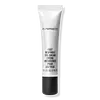What's inside
What's inside
 Key Ingredients
Key Ingredients

 Benefits
Benefits

 Concerns
Concerns

 Ingredients Side-by-side
Ingredients Side-by-side

Dimethicone
EmollientIsododecane
EmollientWater
Skin ConditioningPolysilicone-11
Polyethylene
AbrasiveButylene Glycol
HumectantCyclopentasiloxane
EmollientHexyldecyl Stearate
EmollientCaffeine
Skin ConditioningTocopheryl Acetate
AntioxidantSodium Hyaluronate
HumectantRetinyl Palmitate
Skin ConditioningYeast Extract
Skin ConditioningTriticum Vulgare Germ Oil
EmollientHordeum Vulgare Extract
EmollientPyrus Malus Fruit Extract
Skin ConditioningCucumis Sativus Fruit Extract
EmollientHelianthus Annuus Seed Oil
EmollientCentella Asiatica Extract
CleansingSaccharomyces Lysate Extract
HumectantSqualane
EmollientMethyldihydrojasmonate
MaskingPhytosphingosine
Skin ConditioningQuaternium-18 Bentonite
Propylene Carbonate
SolventPolymethyl Methacrylate
Cetyl PEG/PPG-10/1 Dimethicone
EmulsifyingPEG/PPG-18/18 Dimethicone
EmulsifyingTetrasodium EDTA
Sodium Dehydroacetate
PreservativePhenoxyethanol
PreservativeDimethicone, Isododecane, Water, Polysilicone-11, Polyethylene, Butylene Glycol, Cyclopentasiloxane, Hexyldecyl Stearate, Caffeine, Tocopheryl Acetate, Sodium Hyaluronate, Retinyl Palmitate, Yeast Extract, Triticum Vulgare Germ Oil, Hordeum Vulgare Extract, Pyrus Malus Fruit Extract, Cucumis Sativus Fruit Extract, Helianthus Annuus Seed Oil, Centella Asiatica Extract, Saccharomyces Lysate Extract, Squalane, Methyldihydrojasmonate, Phytosphingosine, Quaternium-18 Bentonite, Propylene Carbonate, Polymethyl Methacrylate, Cetyl PEG/PPG-10/1 Dimethicone, PEG/PPG-18/18 Dimethicone, Tetrasodium EDTA, Sodium Dehydroacetate, Phenoxyethanol
Water
Skin ConditioningPropanediol
SolventGlycerin
HumectantSqualane
EmollientBoron Nitride
AbsorbentCaffeine
Skin ConditioningPolyacrylate Crosspolymer-6
Emulsion StabilisingCaprylyl/Capryl Glucoside
CleansingHydroxyethyl Acrylate/Sodium Acryloyldimethyl Taurate Copolymer
Emulsion Stabilising1,2-Hexanediol
Skin ConditioningParfum
MaskingPentylene Glycol
Skin ConditioningAvena Sativa Kernel Extract
AbrasiveTocopheryl Acetate
AntioxidantEthylhexylglycerin
Skin ConditioningPPG-26-Buteth-26
Skin ConditioningEscin
TonicPersea Gratissima Oil Unsaponifiables
Skin ConditioningDisodium EDTA
PEG-40 Hydrogenated Castor Oil
EmulsifyingAmmonium Acryloyldimethyltaurate/Vp Copolymer
Curcuma Longa Root Extract
MaskingCaramel
Cosmetic ColorantButylene Glycol
HumectantActinidia Chinensis Fruit Extract
EmollientKalanchoe Pinnata Leaf Extract
MaskingSodium Hydroxide
BufferingMarrubium Vulgare Extract
Skin ConditioningSodium Benzoate
MaskingAnthriscus Sylvestris Extract
Skin ConditioningHedychium Coronarium Root Extract
MaskingT-Butyl Alcohol
PerfumingCitric Acid
BufferingPhenethyl Alcohol
MaskingFurcellaria Lumbricalis Extract
Skin ConditioningPotassium Sorbate
PreservativeMaris Sal
Skin ConditioningLapsana Communis Flower/Leaf/Stem Extract
Skin ConditioningWater, Propanediol, Glycerin, Squalane, Boron Nitride, Caffeine, Polyacrylate Crosspolymer-6, Caprylyl/Capryl Glucoside, Hydroxyethyl Acrylate/Sodium Acryloyldimethyl Taurate Copolymer, 1,2-Hexanediol, Parfum, Pentylene Glycol, Avena Sativa Kernel Extract, Tocopheryl Acetate, Ethylhexylglycerin, PPG-26-Buteth-26, Escin, Persea Gratissima Oil Unsaponifiables, Disodium EDTA, PEG-40 Hydrogenated Castor Oil, Ammonium Acryloyldimethyltaurate/Vp Copolymer, Curcuma Longa Root Extract, Caramel, Butylene Glycol, Actinidia Chinensis Fruit Extract, Kalanchoe Pinnata Leaf Extract, Sodium Hydroxide, Marrubium Vulgare Extract, Sodium Benzoate, Anthriscus Sylvestris Extract, Hedychium Coronarium Root Extract, T-Butyl Alcohol, Citric Acid, Phenethyl Alcohol, Furcellaria Lumbricalis Extract, Potassium Sorbate, Maris Sal, Lapsana Communis Flower/Leaf/Stem Extract
 Reviews
Reviews

Ingredients Explained
These ingredients are found in both products.
Ingredients higher up in an ingredient list are typically present in a larger amount.
Butylene Glycol (or BG) is used within cosmetic products for a few different reasons:
Overall, Butylene Glycol is a safe and well-rounded ingredient that works well with other ingredients.
Though this ingredient works well with most skin types, some people with sensitive skin may experience a reaction such as allergic rashes, closed comedones, or itchiness.
Learn more about Butylene GlycolCaffeine is most associated with coffee, tea, and cacao. In skincare, it helps with calming inflammation and is rich in antioxidants.
While caffeine is used to treat cellulite and and dark circles, further studies are needed to prove this. It has been believed to help with these skin conditions due to its ability to dilate blood vessels and increase blood flow.
Some studies are looking into caffeine's ability to protect against UV rays.
Learn more about CaffeineSqualane is an emollient that helps the skin hold onto moisture. It's an oily liquid that occurs naturally in certain types of fish and plant oils.
Because squalane boosts hydration in the skin, it also comes with plenty of benefits: it is an antioxidant and can help fight free radicals and skin damage. Squalane is also found to have a detoxifying effect when applied.
Squalane comes from squalene, which occurs naturally within the sebum of our skin. It is one of the oils our skin produces to keep itself hydrated. Squalane is the hydrogenated version of squalene and has a longer shelf life.
Research shows that squalane is non-irritating (even at 100% concentration).
In general, it's a fantastic ingredient. It does a great job at hydrating the skin, and it's suitable for those with sensitive skin.
The source of squalane may impact malassezia / fungal acne. This is because olive oil derived squalane can contain impurities such as fatty acids and plant waxes. Sugarcane derived squalane is recommended for anyone with malassezia concerns.
Is squalane vegan?
This depends on the source. Squalane can be derived from both plants and animals. Most squalane used in skincare comes from plants.
Please note: the source of squalane is only known if disclosed by the brand. We recommend reaching out to the brand if you have any questions about their squalane.
Read more about squalene with an "e".
Is squalane an oil?
Squalane is often called an oil, but it’s technically not; it’s a hydrocarbon, meaning it’s only made of carbon and hydrogen, unlike true oils which are triglycerides made of fatty acids and glycerol.
The term “oil-free” isn’t regulated, so companies can define it however they want. Some exclude all oils, while others just avoid mineral oil or comedogenic oils.
While some people avoid oils thinking they cause breakouts, the right kind of oil (or oil-like ingredient like squalane) can actually help balance and hydrate your skin. It’s worth testing out simple oils or squalane to see what works best for your skin.
Learn more about SqualaneTocopheryl Acetate is AKA Vitamin E. It is an antioxidant and protects your skin from free radicals. Free radicals damage the skin by breaking down collagen.
One study found using Tocopheryl Acetate with Vitamin C decreased the number of sunburned cells.
Tocopheryl Acetate is commonly found in both skincare and dietary supplements.
Learn more about Tocopheryl AcetateWater. It's the most common cosmetic ingredient of all. You'll usually see it at the top of ingredient lists, meaning that it makes up the largest part of the product.
So why is it so popular? Water most often acts as a solvent - this means that it helps dissolve other ingredients into the formulation.
You'll also recognize water as that liquid we all need to stay alive. If you see this, drink a glass of water. Stay hydrated!
Learn more about Water